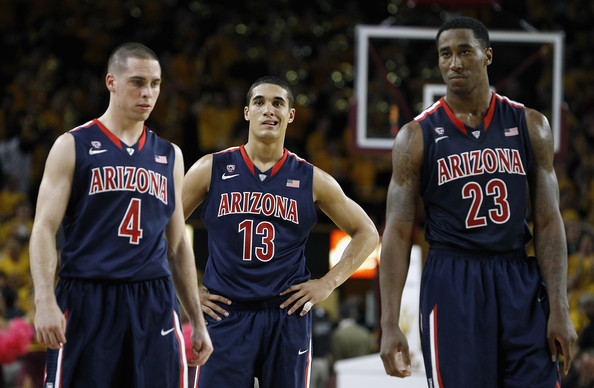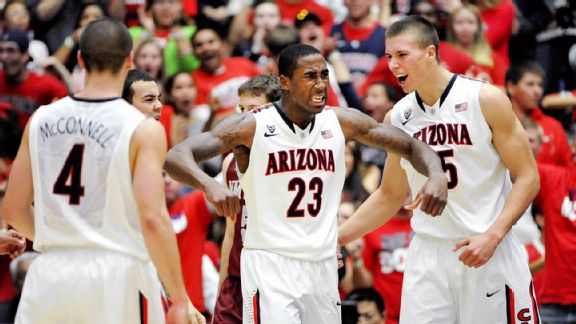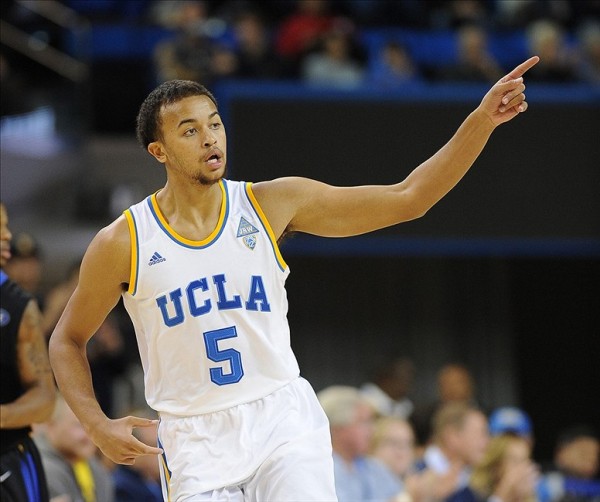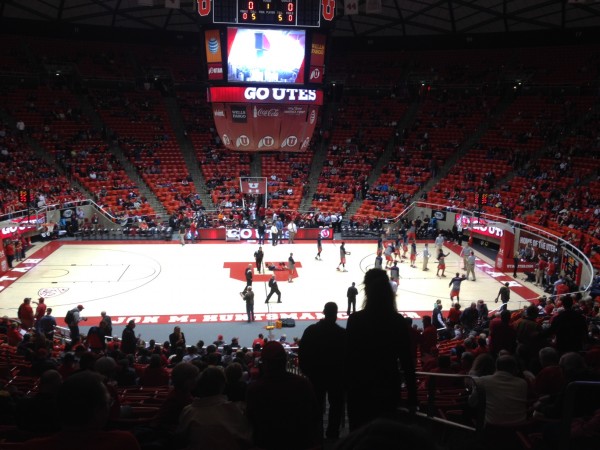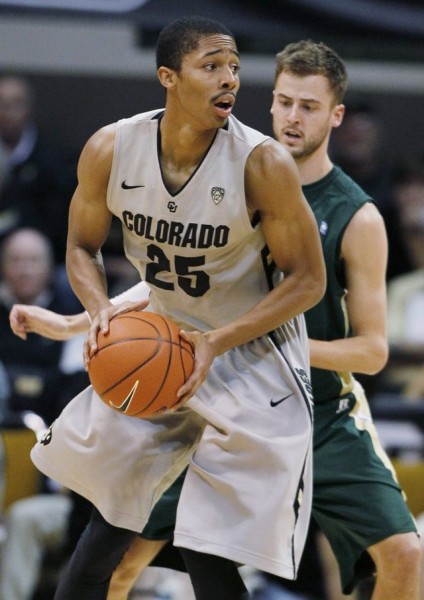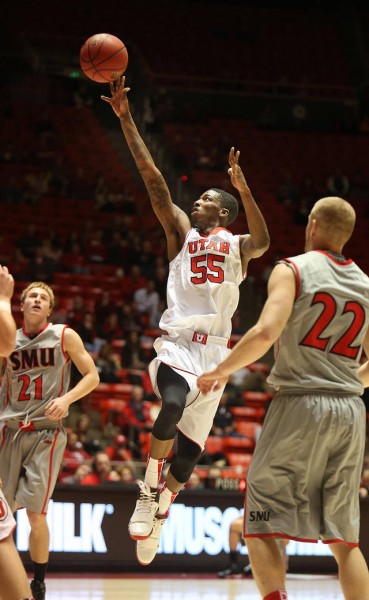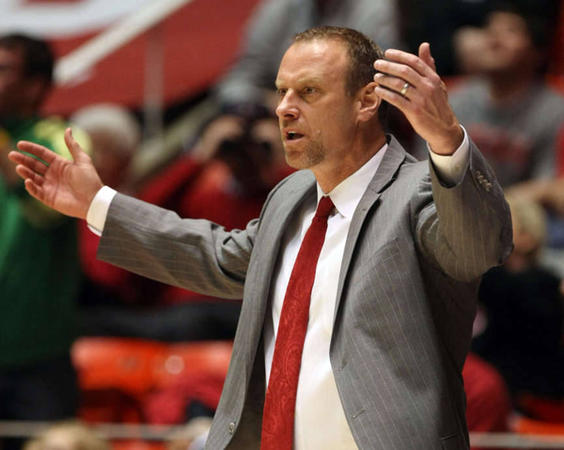Pac-12 Player of the Year and All-Conference Teams
Posted by Andrew Murawa on March 10th, 2014Before we announce our Player of the Year and our all-Pac-12 Teams, a quick note on our methodology here — we had each of our three voters – Andrew Murawa, Connor Pelton, and Adam Butler – rank their top 15 players in the conference and awarded points to each player based on those votes (1st place vote =15 points, 2nd place =14, etc.). Normally, when putting together an all-conference team, we’d make an effort to balance our team by position, with either three guards and two frontcourt players on each team, or vice versa. But in this season’s guard-heavy conference we didn’t get a lot of frontcourt votes, which is why you’ll see a five-guard first team when you scroll down. As for our Player of the Year voting, it was simple enough. The player with the most points in our all-conference balloting was our Pac-12 Player of the Year.
Player of the Year
Nick Johnson, Junior, Arizona – As expected, it came down to a close two-man race for Player of the Year, but Johnson squeaked out the win by one point over UCLA sophomore Kyle Anderson. Johnson is not only the leading scorer on the Wildcats, he is also their key defensive catalyst. As Adam Butler wrote justifying his vote for Johnson over Anderson: “Nick Johnson was the most critical player on the best team in the conference. As he went, the Wildcats went and more often than not (see 28-3), Nick Johnson played well. Nay, great.” To look at it the other way, compare Johnson’s performance in the three Arizona losses to their 28 wins. In those three losses, Johnson averaged fewer than 10 points per game on 23.9% eFG; in the wins, he posted a 50.8% eFG on his way to 16.8 points per win.
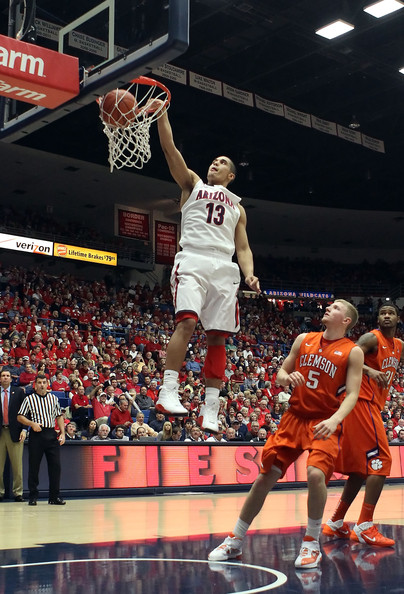
Nick Johnson’s Prowess On Both Ends Of The Court For The Conference’s Best Team Earns Him The RTC Pac-12 Player of the Year (Christian Petersen)
All-Conference
First Team
- Nick Johnson, Junior, Arizona (16.1 PPG, 4.0 RPG, 1.2 SPG)
- Kyle Anderson, Sophomore, UCLA (14.9 PPG, 8.7 RPG, 6.6 APG, 1.7 SPG, 48% 3FG) – The versatile Anderson has been one of the nation’s most improved players, registering as not only a terrific play-maker but an elite rebounding guard.
- Delon Wright, Junior, Utah (16.1 PPG, 6.9 RPG, 5.3 APG, 2.6 SPG, 1.3 SPG, 59.7% eFG) – The junior college transfer came out of nowhere to become arguably the most versatile player in the conference – if not the most versatile in the nation. These three players were almost unanimously the top three players in the conference this season.
- Justin Cobbs, Senior, California (15.6 PPG, 5.8 APG) – Cobbs ranked no higher than fifth but no lower than eighth on any of the three ballots, a consistency which earned him a first-team all-conference spot.
- Roberto Nelson, Senior, Oregon State (20.6 PPG, 3.7 APG, 3.6 RPG) – Nelson was in the top five on two of three ballots, but was left completely off of a third (ahem, Butler). He still had enough votes to sneak on to the first team.





























